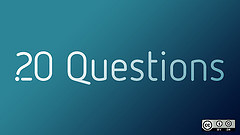Stavros Halvatzis's Blog, page 53
March 2, 2014
How Marketable is Your Film Genre?

Is the Musical Dead?
Understanding the importance of the genre of your screenplay is essential in determining whether your story gets sold. The popularity of certain film genres is in a constant state of flux with regards to Hollywood studios. According to screenwriting guru, Michael Hauge, some genres are currently hard to sell. If your story concept falls within one of those, your effort to acquire seed money from a major studio, will be that much harder.Here, then, in increasing order of acceptability, are some of the genres in question:
Musicals in the mold of Oklahoma are almost impossible to sell. Feature-Length, MTV-inspired, Flashdance type movies, however, are not.
Westerns are currently a difficult sell, unless a big name director gets behind the project, as are period films, meaning anything pre-1970s, followed by biographies, and science fiction—due to the high budgets associated with this latter genre. Here, again, the attachment of a specific director to the project can make all the difference—as The Terminator, Aliens and Avatar directed by James Cameron, have clearly proven.
Perhaps the most acceptable of these financially-jittery genres is the horror film, especially if independent financing is sought.
Of course, in stating the above, I do not mean to say that films belonging to these genres never get made; only that they are not favoured by the big studios, off the bat.
By contrast, genres representing action adventure, suspense thriller, love story, comedy, drama or any combination thereof, tends to be viewed as a strong commodity by Hollywood. If your script belongs to any of those last genres, its marketability quotient is high.
Summary
Certain genres are easier to market to studios, and independent producers, than others. Choosing a poplar genre maximises the chance of a first-time writer achieving success.
Invitation
If you enjoyed this post, kindly share it with others. If you have a suggestion for a future one, please leave a comment and let’s get chatting. You may subscribe to this blog by clicking on the “subscribe” or “profile” link on the right-hand side of this article. I post new material every Monday.
Image by gnuckx
License: http://creativecommons.org/licenses/b...
February 23, 2014
Understanding Inner and Outer Character Motivation

Motivating Character:
In his book, Writing Screenplays that Sell , Michael Hauge examines the very important topic of inner and outer character motivation in relation to story structure.It’s important to note that much of the wisdom developed by the likes of Syd Field, Robert McKee, Linda Seger, Christian Vogler, Michael Hauge, and others, is aimed at the screenplay, but is, nevertheless, of direct benefit to novelists too. It is my opinion that some novels would benefit from the injection of pace and a deeper understanding of story structure as a counter to reader fatigue and boredom.
Hauge reminds us that motivation exists on two levels. Outer motivation is the goal that the character, chiefly the protagonist, strives to accomplish by the end of the story. It is the answer to the question: What is the story about. Solving a puzzle? Catching the murderer? Winning the love of a beautiful woman? These questions and answers are all visible, plot orientated, outer journey motivations.
Inner motivation, by contrast, is related to the inner journey of the protagonist. It is the answer to the question: Why does the protagonist strive to achieve her outer motivation? The answer always involves, at least in part, the protagonist’s desire to gain self-worth and an understanding of her place in the scheme of things.
Because it belongs to the inner journey, it is, by definition, invisible and exposes its presence through the outer actions of the character. Inner motivation is more tightly related to character growth and theme than it is to plot, although it motivates, explains and impacts plot.
In The Matrix, Neo strives to understand why the world he inhabits feels wrong. He seeks to answer the question: What is the matrix? Having been given the answer to that question, he then strives to discover whether or not he is The One. Both these questions are fundamental to his growth as a person and inform the decisions and actions he makes. This is a clear example of the knotting together of the inner and outer journey strands.
Here, then, is a summary of the chief aspects of inner and outer motivation, à la Hauge:
Outer motivation is visible, desires outward accomplishment, is revealed through action, and answers the question: What is the story about?
Inner motivation, by contrast, is invisible, seeks to secure self-worth, is revealed through dialogue and action, and answers the question: Why does the character desire the goal?
Summary
This post sheds light on chief aspects of the protagonist’s inner and outer motivation.
Invitation
If you enjoyed this post, kindly share it with others. If you have a suggestion for a future one, please leave a comment and let’s get chatting. You may subscribe to this blog by clicking on the “subscribe” or “profile” link on the right-hand side of this article. I post new material every Monday.
Image by: Run On Beat
License: http://creativecommons.org/licenses/b...
February 16, 2014
How to Write your Pivotal Characters

Pivotal Character:
The respected teacher, Lagos Egri writes about the importance of the the pivotal character in your story.Although Egri may have seen this character apart from the protagonist or antagonist, I believe this type is one which encapsulates the traits described below.
This character may appear in one of several guises, and may appear as the antagonist, protagonist, love interest, sidekick, mentor, and so on. In determining who is to be the pivotal character in your story, decide who will force your characters into action.
The pivotal character forces the conflict from beginning to end. He is the motivating power, the cause of conflict in your story—the driving engine of all stories. He experiences no doubt within himself about his course of action and knows immediately what he wants. Othello’s Iago is such a character. His function is to force the conflict to the bitter end, never backing down. He is relentless because circumstances beyond his control force him to be so. If an honest man steals, it’s not for excitement or gain, but because his family is starving, or he needs money for an operation for his child.
Whatever the reason, it must be an overpowering one. If the pivotal character stops forcing the conflict, the story skids to a halt. The pivotal character usually seeks change because he’s dissatisfied. She aggressively and relentlessly tries either to change or to maintain her status quo. A well-crafted pivotal character holds nothing sacred and feels that nothing can prevent her from reaching her goal.
The pivotal character knows where he’s going, and tries to bend everyone to go his will. If the antagonist refuses to go along with him, therefore, it’s not because the pivotal character didn’t push him hard enough. The pivotal character is an obsessively focused individual who sees only his own goal. He is reactionary, militant and passionate. This applies to good men or women as well as it does to criminals.
Here are some characteristics that make for fine pivotal characters:
Someone who wants revenge on the man who ran away with his wife.
Someone who loves a woman madly but must make money first to marry her.
Someone who is willing to give his life for his country, which he loves more than anything.
Someone who is greedy. His greed sprang from poverty and he exploits others because he fears hunger.
Someone who will stop at nothing and will destroy others to achieve his goal.
Someone who desperately and obsessively wants to achieve success in a specific job or profession and will stop at nothing to achieve that goal.
Summary
The pivotal character in your story (who can be drawn from one of several types—protagonist, antagonist, love interest, mentor), is the character who forces others into action and drives the story forward.
Invitation
If you enjoyed this post, or have a suggestion for a future one, kindly leave a comment and let’s get chatting. You may subscribe to this blog by clicking on the “subscribe” or “profile” link on the right-hand side of this article. I post new material every Monday.
Image: Hey Paul Studios
License: http://creativecommons.org/licenses/b...
February 9, 2014
How Good is Your Story?
 As an author, and a lecturer in the craft of storytelling, I am often asked, in the first instance, and required, in the second, to evaluate work that is presented to me. I am, and always have been, uncomfortable with assigning numerical values (marks) to stories. Stories are not algebra. The final product is not right or wrong. Stories are works of art, and as such, are as slippery as eels. They are, to some extent, subject to taste, to audience/readership preferences, and to the current popularity of specific genres.
As an author, and a lecturer in the craft of storytelling, I am often asked, in the first instance, and required, in the second, to evaluate work that is presented to me. I am, and always have been, uncomfortable with assigning numerical values (marks) to stories. Stories are not algebra. The final product is not right or wrong. Stories are works of art, and as such, are as slippery as eels. They are, to some extent, subject to taste, to audience/readership preferences, and to the current popularity of specific genres.
Here, I am not referring to grammatical errors, faulty sentence construction, spelling mistakes—to editing. Those are all perfectly quantifiable. I am talking about the perceived worth of more nebulous concepts such as “up” versus “down” endings, relevance of theme, effectiveness of writing style, and even to such technical aspects as judging whether the right balance between characterisation and the relentless forward thrust of the story, has been achieved.
In the past few days I have had to provide guidance regarding the appropriateness of selecting one director over another for study, asked to evaluate a story-in-progress by an indie colleague, and implored to give a rating, as a number out of ten, of a completed first draft of a novel by another.
My answer to the first request was that any director whose body of work has solicited varied opinions, and is of interest to the student, is worthy of study; to the second, that the writer finish the story before seeking the opinion of others; to the third, that I would not give a mark out of ten, but I would offer my opinion as to whether I thought the story to be poor, show promise, or be ready-to-go.
This reluctance to provide a hard judgment on stories is less an indication of temerity or ignorance on my part than it is a response to the changing environment of story reception. Certainly, with regard to indie films and novels, the public is the ultimate judge of whether a story will sink or swim. I know of many instances where work has been turned down by publishers and producers and then has gone on to achieve extraordinary success on amazon, or through Internet channels such as YouTube, resulting in burgeoning writing and film making careers on the part of the writers and filmmakers.
Does this challenge the belief that some works are genuinely better than others? Certainly, not in terms of quantifiable technical aspects that are subject to proper editing; but it does acknowledge the proliferation of relativism with regards to theme and subject matter. In a fast-changing, technologically-driven world where the boundaries of nationality and personal identity (and, by implication, genre), are bleeding into each other, these aspects of a story are a lot harder to pin down, let alone, evaluate. My advise to story tellers is simply this: Write your stories to the best of your ability and let your readership or audience decide on whether they succeed or fail.
Summary
The success or failure of your stories, especially for indie writers and filmmakers, ultimately lies in the hands of your readership or audience. Solicit the opinion of experts on technical aspects of your work, but leave the judgment about your subject matter and its stylistic treatment to the latter.
Invitation
If you enjoyed this post, or have a suggestion for a future one, kindly leave a comment and let’s get chatting. You may subscribe to this blog by clicking on the “subscribe” or “profile” link on the right-hand side of this article. I post new material every Monday.
Image by Barry Solow
February 2, 2014
Story-Structure Checklist

Story Checklist:
A story checklist helps to concentrate our attention on important aspects of story construction. Here is one on story structure, once more, gleaned from Michael Hauge’s book, Writing Screenplays that Sell.1. Does each scene, event, and character contribute to the protagonist’s outer motivation.
The beginning of the story poses an overall question in the viewer’s/reader’s mind that will be answered by the end of the story. In The Matrix, for example, the overall story question is; Is Neo The One?
2. Is each hurdle and obstacle in the protagonist’s path to her goal, greater than the last one? In The Matrix, Neo’s journey is strewn with obstacles—from not knowing how to fight, from a lack of self-belief, to finally being shot in the chest by agent Smith.
3. Does the pace of your story accelerate to the climax? In the third act of the The Karate Kid, the scenes are spaced closer and closer together—reconciling with Ali, being admitted to the tournament, participating in the initial matches, suffering a broken knee, and taking part in the final match.
4. Is the emotional through line made up of peaks and valleys? In The Karate Kid, the tournament scenes are interspersed with quieter scenes of plotting by the Cobras, coaching, and fixing Daniel’s leg.
5. Is your story chock-full of anticipation? The karate tournament, which we know about from the start, the fights with Johnny, the anticipated attacks after the party, all add to the overall sense of anticipation in The Karate Kid.
6. Are there surprises and reversals to our anticipation? In The Matrix, our expectation that new is indeed, The One, undergoes several reversals when he fails to jump across buildings, or when his meeting with the Oracle seems to indicate the contrary.
7. Does the story create curiosity? In The Karate Kid, we wonder how on earth Mr. Miyagi will manage to teach Daniel the requisite skills to stand up to his brutal opponent.
8. Are your characters, timing, and situation credible? The three month period provides enough time for Daniel to acquire fighting skills under the expert tutelage of Mr. Miyagi, but the time is adroitly condensed by the screenwriter so that the audience can stay involved.
9. Are the events in the story sufficiently foreshadowed? Q. How can we possibly believe that a boy with a broken knee and three months training can win a tough tournament? A. By introducing a secret weapon in the form of the Crane Stance and Mr. Miyagi’s healing abilities.
10. Does your story have an effective opening and ending? The Karate Kid uses a new arrival opening from New Jersey to Van Nuys to introduce Daniel, which is appropriate to the slow build up of the story. The final match, a do-or-die confrontation between the protagonist and antagonist, is an appropriate climax which settles the overall question established early in the story: Can Daniel win against all odds?
Summary
The story-structure checklist focuses the writer’s attention on important aspects of story construction. Familiarity with such a list makes the task of troubleshooting one’s tale that much easier.
Invitation
If you enjoyed this post, or have a suggestion for a future one, kindly leave a comment and let’s get chatting. You may subscribe to this blog by clicking on the “subscribe” or “profile” link on the right-hand side of this article. I post new material every Monday.
Image: Oliver Tacke
January 26, 2014
Scene Checklist

Scene Checklist:
As one of the larger units of story construction, effective scenes make for effective tales. In his book, Writing Screenplays that Sell, Michael Hauge, provides us with a concise list of what to look out for in your scenes.1. How does your scene contribute to your protagonist’s outer and inner journey? Remember the outer goal is extremely important in a story. Rumination (inner journey) is not sufficient to drive the visual thrust of your story. We need to see the protagonist engaged in outer struggles, if we are to understand his inner conflict too.
2. Does your scene, like your story, typically have a beginning, middle and end? Your scene ought to establish, build and resolve a situation. There are, of course, exceptions to this. Some scenes are short and are transitional in nature, intended solely to bridge other more important scenes, but as a general rule, this piece of advice holds true.
3. Does your scene propel the reader into the next? Causally linking one scene to the next at the level of the inner or outer journeys makes for compelling tales. In Outrageous Fortune, the scene of two women in the morgue is resolved only when they realise that the body is not that of their lover. But the end of the scene results in their decision to find him, which, in turn, drives the scenes that follow.
4. What is each character’s objective in the scene? Without an objective the scene is rudderless.
5. What is each character’s attitude in the scene? Each character wants something, overtly or covertly. (How does this want tally with that character’s need? ‘Big’ scenes ought to explore and reiterate the tension between want and need.) This want, together with that character’s personality traits, creates an attitude, a motivation. Additionally, characters bleed feelings: they are sad, nostalgic, angry, bored, scared, or turned on, etc. These feelings are revealed directly through dialogue or more subtly, through subtext and action. In Moulin Rouge Satin’s declaration that she does not love Christian, a lie she utters in order to save his life by having him leave, is shot through with irony, sadness and a sense of tragedy.
6. Do many of your scenes contain action, not just dialogue? Talking heads are best left to television soapies and past masters such as Ingmar Bergman. Of course, dialogue is perfectly acceptable in scenes, but stories benefit from the injection of telling action, from small acts such as the lifting of an eyebrow, to the landing of a punch. Imagine your screenplay with the sound off. Is the meaning of a scene still apparent through the action of your characters? If the answer is ‘yes’ then you’d be better off culling as much dialogue as possible. Unless you are Woody Allen, or Quentin Tarantino, your screenplay should not be talk-heavy.
7. Does your scene serve multiple purposes? Does your scene achieve as much as possible to keep your audience or readers emotionally involved with your protagonist and her journey to her goal? Does it reveal character background, motivation, conflict, anticipation, curiosity, credibility and identification or empathy? Does it contain foreshadowing, premonitions and the like? Again, not every scene can be cramp-packed with the above, but pivotal scenes clustered around and including your turning points, pinches, and midpoint, certainly can.
Summary
A scene checklist focuses our attention on the important elements your scene ought to contain in order to be affective.
Invitation
If you enjoyed this post, or have a suggestion for a future one, kindly leave a comment and let’s get chatting. You may subscribe to this blog by clicking on the “subscribe” or “profile” link on the right-hand side of this article. I post new material every Monday.
Pic by AJ Cann http://farm8.staticflickr.com/7454/95...
License: http://creativecommons.org/licenses/b...
January 19, 2014
The Future of Writing

Bright Future
There has never been a better time to be a writer. After years of concern that reading might be on the wane, especially for our attention-challenged teenagers forever bent over their smart phones and computer keyboards, reading is once again becoming cool, supported by the gadget revolution and the e-readers that it has spawned—Kindle, Nook, Kobo and the like.Additionally, the virtual side of stores such as Amazon and Barnes and Noble have provided a shopfront where authors can sell their work directly to the public and let it decide on its merit.
No longer need we plaster our walls with rejection slips from reluctant publishers, nor struggle to find reputable agents willing to take us on. Had that been my only option, I’d probably have fallen by the wayside, never having had the stomach to pursue that route in the first place. My first novel, Scarab, completed some 14 years ago, shelved and quietly forgotten about, might never have reached the No. 1 spot in the science fiction/hard-tech category on amazon.com and amazon.co.uk, nor would its follow up, Scarab II: Reawakening, have seen the light of day.
Luckily, I entered the market at a time when Amazon had already provided an alternative to the traditional publishing route through their kindle reader. For me it was a no-brainer. The reading public is, after all, our ultimate judge: It is the public we have to please if we are to succeed as authors—in an economic sense, at least. Of course, now that one’s work rides the best seller lists, traditional publishers no longer seem as reluctant.
Another factor fueling the writing resurgence is the number of new authors the changed landscape had allowed to emerge. People who would never considered trying their hand at writing are now doing so. Although an exponential increase in the democracy of writing has allowed the birth of material that seems below par, it has also allowed amazing new talent to be discovered. Hugh Howey, whose series, Wool has put him on the map, has admitted in a recent interview, that the traditional route would never had garnered him the success his indie status has.
Last, but not least, as indie writing grows into a giant industry, a number of services are springing up to support it. The number of how-to-write and market-yourself books, websites, and story doctors is growing by the day. Editors married to traditional publishing houses are realising that their services have coin with indie writers too—perhaps even more so. Inevitably, this will impact the quality of indie writing, driving it ever upward. Not only will this benefit the reading public, it will also affect the quality of movies that are increasingly drawing from this pool of new talent.
So, my fellow indie writers, put on your shades, for, whichever way we look, the future of writing seems bright indeed.
Summary
The positive outlook for reading and writing seems set to continue, supported by a growing number of hardware innovations and trends.
Invitation
If you enjoyed this post, or have a suggestion for a future one, kindly leave a comment and let’s get chatting. You may subscribe to this blog by clicking on the “subscribe” or “profile” link on the right-hand side of this article. I post new material every Monday.
Photo: M Vegas. http://creativecommons.org/licenses/b...
January 12, 2014
How Conflict Leads to Character Growth
In order for the characters in your story to grow, Lagos Egri informs us, you must lead them into situations of increasing conflict.
Conflict emanates from contradiction. Contradiction results from the clash of two powerful wills, pitted against each other. Animosity, fear, jealousy, covetousness, hate, and overbearing ambition pitted against their opposites are some of the the ingredients that make for a powerful conflict.
Conflict will not thrive without heaping trouble and misery upon our characters. To rectify a wrong decision, they make another, then another, and a third to fix the second, and so on. This provides the causality that drives the story forward like a stack of falling dominos.
Some characters will eventually concede defeat. Others who are stubborn will never give up.
As a writer, your interest lies in characters who, by their physical and psychological make-up, are predestined to defy the odds and never give up. They are reckless. They try to achieve their goal, no matter what.
Such driven people, however, become desperate only after dire necessity forces them to a decision, and any delay in acting might cost them their lives, loves, wealth, health, or honour. Desperate necessity propels these characters toward their ultimate goal, which is clearly stated in the story’s premise.
The greater the conflict in the characters’ lives, therefore, the greater their growth. End-to-end growth, such as from jealousy to trust, or from hatred to love, and how it happens, makes for the most exciting and successful stories.
Summary
Conflict promotes growth by causing contradictory traits to collide and resolve themselves into an outcome, where one trait gains prominence over the other.
January 5, 2014
How to Write Your Moral Premise

The Moral Premise:
Although I’ve blogged about this subject before, it’s such an important one that it warrants revisiting. Coming up with a good premise, after all, is the first step you take in creating your story. It is the seed from which your tale will sprout. Or, if you will, the essential core or meaning of the story you wish to write. It is also the chief theme of your tale. It is, therefore, as Lagos Egri informs us, wise to formulate your premise first, before you begin writing, because you must first know exactly what you want to say, why you want to say it, and how far you want to go in saying it.Egri goes on to mention that if you intend to write a story about greed, for example, you need to know precisely what it is that you want to explore about it and what direction the story will take. Condensing your story to its premise, you have:
Greed leads to destruction, or greed leads to humiliation, or greed leads to isolation, or greed leads to loss of love.
Use the words that express your idea perfectly, knowing that it is the essence of your story. It may be brief and concise, or slightly more descriptive. Your premise should include the basic facts about the character, the conflict and its resolution.
It takes the form: Character/Subject + Conflict/Verb + Resolution/Object.
The first part of the premise should represent the dominant character trait. For example: honesty, dishonesty, selfishness, ruthlessness, false pride, etc.
The second and third parts should represent the conflict and its resolution: dishonesty leads to exposure, or, ruthless ambition leads to destruction, etc.
The premise entails a result. You, therefore, need to know the end of your story before you start to write it. This is because your premise depends on the outcome of the final conflict, typically between the protagonist and antagonist. Only then will you know if greed does indeed lead to destruction, humiliation, isolation, or loss of love in your specific story.
Finally, note that the premise encapsulates a moral aspect, which tends to dictate the kind of ending your story resolves into. In stories that resolve in an “up ending” good triumphs over evil. In a “down ending” evil tends to trump good. In the latter, your premise might well be: Greed can lead to a successful life devoid of suffering. You should be aware, however, that down endings tend to do less well in the realm of popular fiction, although there are always exceptions.
Summary
A premise contains the mortal essence or meaning of your story. It is the blueprint that informs the writing of your tale.
December 29, 2013
How to Interrogate Your Story
20 Questions:
To ensure that your story is on track, complete the first draft of your novel or screenplay, then answer the following questions (drawn from Lagos Egri’s superlative work on dramatic writing).1. What is your story’s premise? For example: “Unswerving integrity delivers from disgrace.” That defines the moral premise/theme of your story.
2. What is your protagonist’s goal? What does your protagonist want, more than anything?
3. What is your protagonist’s compulsive, 100% trait?
4. What is your character insecure about? All characters want self-preservation and security.
5. Why is the character insecure about this condition? How did he or she develop that insecurity about the condition?
6. How did the character develop the condition about which he is insecure? What is this injury for which the character has a compulsive drive to escape? Backstory here. Provide a specific event or series of events that explain how he developed the condition. Those events caused a chain of reaction/action/reaction. Tell the tale.
7. What is the crisis that upsets the status quo? How does it affect the protagonist?
Why is the protagonist dissatisfied?
8. What is the dire necessity that spurs the protagonist to action and keeps him relentless to reach his goal? This is something that threatens his special insecurity.
9. How does hesitation to take action threaten to worsen the protagonist’s situation?
10. What decision will he make or action will he take to change things? This is his point of attack, the decision or action that starts the conflict.
11. Is the protagonist fighting for or against the status quo? Does he want to keep things the way they are, or change them because they’ve become intolerable?
12. Who is your antagonist? He must be diametrically and militantly opposed to the protagonist.
13. Why does the antagonist oppose the protagonist and his goal? What is the antagonist’s motivation?
14. What is the point of 1) contradiction and 2) conflict between them?
15. What is the unbreakable bond between the protagonist and antagonist? What is so much at stake that they can’t leave each other? Multiple reasons are good.
16. What is the wrong step the protagonist makes that starts the crisis?
17. How does this decision create another problem?
18. What does the protagonist do to rectify this new problem?
19. How does this response create another, worse, problem?
20. How does the final crisis, conflict, and resolution prove your premise?
Summary
Satisfactorily answering the set of twenty questions listed above will help to keep your characters and story on track.




